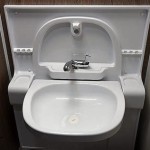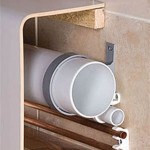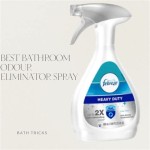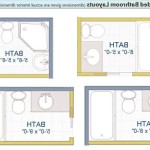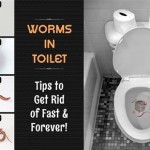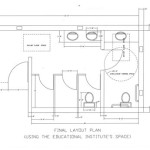What Are These Tiny Flies in My Bathroom?
Tiny flies buzzing around your bathroom can be a frustrating and unsanitary problem. These pesky insects are often called "drain flies," "moth flies," or "fruit flies," but they can be difficult to identify and eliminate. Understanding the different types of tiny flies that frequent bathrooms, their habits, and how to prevent their presence is crucial for creating a clean and comfortable environment.
Identifying the Culprit
The most common tiny flies found in bathrooms are drain flies, moth flies, and fruit flies. While they may look similar at first glance, their distinct characteristics help differentiate them:
- Drain Flies: These flies are small, gray, and fuzzy, resembling miniature moths. They have long, slender legs and wings that fold over their bodies when at rest. They are attracted to damp, organic matter in drains and sewer pipes.
- Moth Flies: As their name suggests, moth flies resemble moths, with feathery antennae and wings that fold over their bodies. They are typically darker in color than drain flies and have a slightly longer lifespan.
- Fruit Flies: These flies are smaller and more slender than drain flies and moth flies, with bright red eyes and wings that are clear and not as fuzzy. They are primarily drawn to overripe fruit and fermenting liquids.
Why They Invade Bathrooms
Tiny flies are attracted to bathrooms due to the presence of moisture, food sources, and favorable breeding conditions. They thrive in damp, organic matter that accumulates in drains, sewage pipes, and even moist areas like shower stalls and sinks. Here's a closer look at why these flies are drawn to your bathroom:
- Moisture: Bathrooms are naturally humid environments, providing ideal conditions for flies to reproduce. Moisture can accumulate in drains, pipes, and other areas, creating a breeding ground for these insects.
- Food Sources: Tiny flies are attracted to various food sources found in bathrooms, including organic matter in drains, decaying hair and skin cells, and even damp sponges and cleaning cloths.
- Breeding Conditions: Damp, dark areas like drainpipes and shower stalls provide perfect breeding grounds for tiny flies. Females lay eggs in these areas, which hatch into larvae that feed on the organic matter present.
Eradicating Tiny Flies
Getting rid of tiny flies involves a multi-pronged approach that addresses both the source of the infestation and the flies themselves. Here are some effective methods:
- Clean and Treat Drains: Regularly clean your bathroom drains with a baking soda and vinegar solution. You can also use a drain cleaner to remove any accumulated grease and grime. For stubborn clogs, consider using a drain snake.
- Dry Out Damp Areas: Ensure proper ventilation in your bathroom by using an exhaust fan during and after showers. Wipe down shower stalls and sinks after use to prevent moisture buildup.
- Eliminate Food Sources: Keep all food items sealed in airtight containers. Empty trash cans regularly, and clean up any spills immediately.
- Use Insecticides: Commercial insect traps and sprays can help eliminate flies, but ensure they are safe to use in bathrooms. Always follow the manufacturer's instructions carefully.
- Preventative Measures: Install drain screens to prevent flies from entering your pipes. Regularly clean and disinfect bathroom surfaces, including toilets, sinks, and floors.

5 Easy Ways To Get Rid Of Drain Flies Fast

How To Get Rid Of Drain Flies Moth And Prevent An Infestation Pest Defence

Are These Drain Flies Coming Out Of My Bathroom Drains
Jab Plumbing Solutions Blog Blocked Drain Plumbers

What Are Those Little Dark Colored Flies That Come Out Of My Bathroom Sink Uf Ifas Entomology And Nematology Department
We Are Seeing Small Flies In Our Bathroom Any Idea What Could Be Causing Them To Show Up Quora
How To Get Rid Of Gnats Drain Flies Fruit And Fungus

How To Rid Of Drain Flies Forbes Home

How To Get Rid Of Drain Flies

How To Get Rid Of Drain Flies 6 Easy Steps
Related Posts
